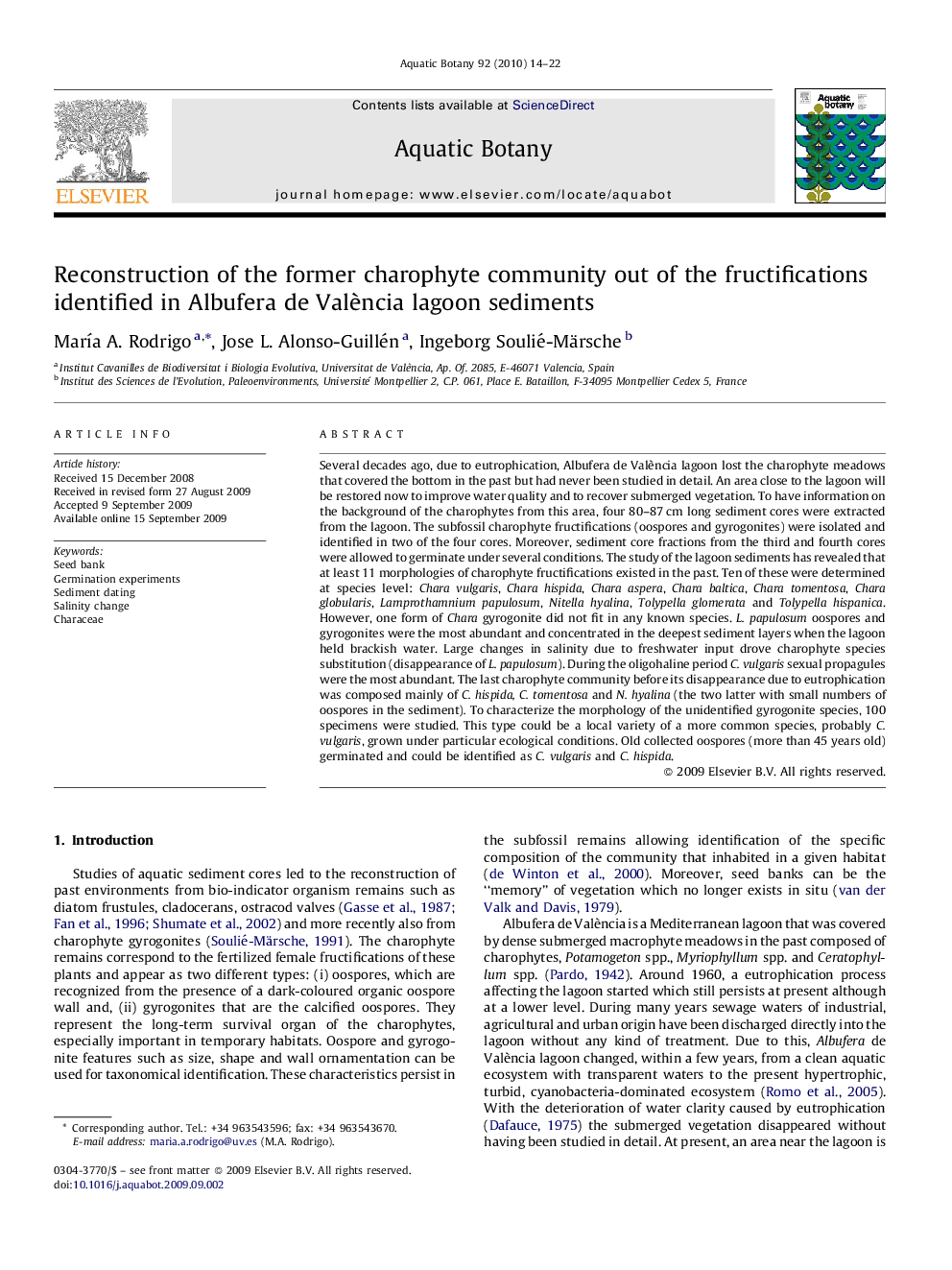| Article ID | Journal | Published Year | Pages | File Type |
|---|---|---|---|---|
| 4528354 | Aquatic Botany | 2010 | 9 Pages |
Several decades ago, due to eutrophication, Albufera de València lagoon lost the charophyte meadows that covered the bottom in the past but had never been studied in detail. An area close to the lagoon will be restored now to improve water quality and to recover submerged vegetation. To have information on the background of the charophytes from this area, four 80–87 cm long sediment cores were extracted from the lagoon. The subfossil charophyte fructifications (oospores and gyrogonites) were isolated and identified in two of the four cores. Moreover, sediment core fractions from the third and fourth cores were allowed to germinate under several conditions. The study of the lagoon sediments has revealed that at least 11 morphologies of charophyte fructifications existed in the past. Ten of these were determined at species level: Chara vulgaris, Chara hispida, Chara aspera, Chara baltica, Chara tomentosa, Chara globularis, Lamprothamnium papulosum, Nitella hyalina, Tolypella glomerata and Tolypella hispanica. However, one form of Chara gyrogonite did not fit in any known species. L. papulosum oospores and gyrogonites were the most abundant and concentrated in the deepest sediment layers when the lagoon held brackish water. Large changes in salinity due to freshwater input drove charophyte species substitution (disappearance of L. papulosum). During the oligohaline period C. vulgaris sexual propagules were the most abundant. The last charophyte community before its disappearance due to eutrophication was composed mainly of C. hispida, C. tomentosa and N. hyalina (the two latter with small numbers of oospores in the sediment). To characterize the morphology of the unidentified gyrogonite species, 100 specimens were studied. This type could be a local variety of a more common species, probably C. vulgaris, grown under particular ecological conditions. Old collected oospores (more than 45 years old) germinated and could be identified as C. vulgaris and C. hispida.
